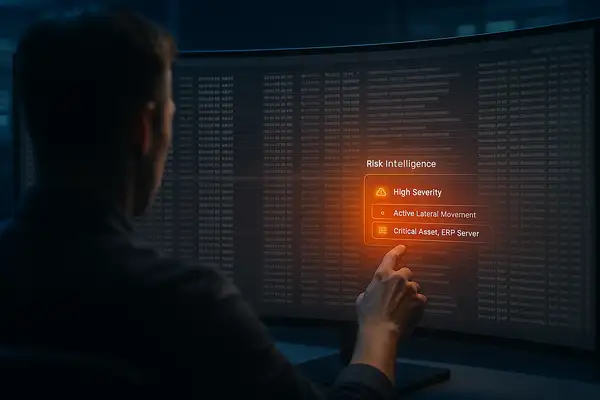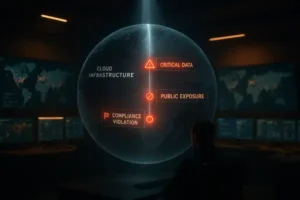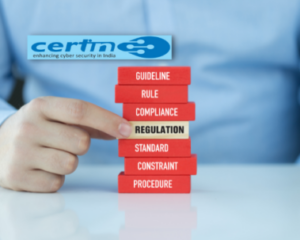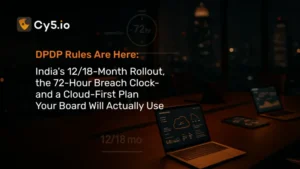In the high-stakes world of cybersecurity, Security Information and Event Management (SIEM) systems are your frontline defenders. But here’s the harsh reality: they’re also drowning your SecOps team in a tsunami of alerts. Picture this—thousands of pings daily, from benign log anomalies to potential breaches, all screaming for attention.
The result? Alert fatigue, skyrocketing mean time to response (MTTR), and attackers slipping through the cracks. If you’ve ever wondered how to prioritize SIEM alerts effectively or reduce SIEM noise without missing real threats, you’re not alone.
Enter risk-based alert prioritization: a game-changer that shifts focus from sheer volume to real exploitability. By layering in contextual signals like identity reach and internet exposure, you transform reactive firefighting into proactive threat hunting. In this MTTR improvement playbook, we’ll unpack the formula, signals, and playbook to cut through the noise—potentially slashing your P1 alerts by 40% or more. Let’s dive in.
The 60-Second Takeaway: What Is Risk-Based Alert Prioritization?
At its core, risk-based prioritization redefines alert urgency not by vendor-assigned severity (which often treats a phishing email like a zero-day exploit), but by a dynamic equation: Threat Score × Exposure Risk × Blast Radius × Business Impact.
- Threat Score: How active and sophisticated is the adversary? (E.g., a known ransomware group’s TTPs score higher.)
- Exposure Risk: Is the asset internet-facing or laterally traversable?
- Blast Radius: How many systems or users could cascade from compromise?
- Business Impact: Does it touch crown-jewel data like customer PII or IP?
This multiplicative model ensures low-threat, low-impact alerts fade into the background, while high-stakes ones rocket to the top. In under 60 words: Multiply threat vectors by exposure paths, scale by potential spread and value at risk, and you’ve got a prioritization engine that slashes MTTR from hours to minutes.
Mapping Key Signals: Fueling Your Risk Engine with CIEM, CSPM, and More
Blind prioritization is a relic. To reduce SIEM noise, you need enriched signals from across your stack. Here’s how to map them:
- Identity Reach (via CIEM): Cloud Infrastructure Entitlement Management (CIEM) tools reveal over-privileged identities. An alert on a service account with admin rights across 50+ workloads? That’s a lateral movement jackpot. Query CIEM for entitlement paths: If an exploited identity can pivot to production databases, bump the score by 2x.
- External Exposure (via CSPM): Cloud Security Posture Management (CSPM) flags misconfigurations like open S3 buckets. For an SIEM alert on anomalous API calls, cross-reference CSPM: Is the endpoint publicly exposed? Internet-facing assets multiply exposure risk by 1.5–3x, turning a “medium” alert into a P0 fire drill.
- Data Sensitivity: Tag assets with classification metadata (e.g., via data loss prevention tools). Alerts involving high-sensitivity data—like PCI-compliant payment gateways—amplify business impact.
- Kill-Chain Stage: Where does the alert sit in Lockheed Martin’s Cyber Kill Chain? Reconnaissance pings are low-risk early warnings; execution-stage anomalies demand immediate triage.
Integrate these via APIs: SIEM pulls real-time feeds from CIEM solutions and CSPM platforms, creating a unified risk canvas. Pro tip: For hybrid environments, layer in endpoint detection signals to capture on-prem blast radius.
The Scoring Formula: Weighted Magic with Thresholds
Now, the math that makes it stick. Start with a base severity (1–10 from your SIEM), then apply weights:
Risk Score = Base Severity × (1 + Exposure Multiplier) × (1 + Identity Reach Factor) × Blast Radius (0–5) × Business Impact (1–10)
Example: A medium-severity (5) login failure on an internet-exposed server (Exposure: +0.5), with a user having broad CIEM entitlements (Reach: +0.3), medium blast radius (3), and high-impact finance data (8).
Score = 5 × 1.5 × 1.3 × 3 × 8 = 234 (High risk—route to senior analyst).
Thresholds keep it actionable:
- <50: Low (automate dismissal).
- 50–150: Medium (batch for junior review).
- 150: High (escalate to SOAR playbook).
Tweak weights quarterly based on your threat model—e.g., emphasize exposure during ransomware season. Tools like Python scripts or SOAR-native calculators make this plug-and-play.
Your Playbook: Auto-Enrich, Score, and Route to SOAR
Implementation doesn’t have to be a moonshot. Follow this step-by-step MTTR improvement playbook:
- Ingest and Enrich: On SIEM alert trigger, auto-query CSPM for exposure tags and CIEM for identity graphs. Add asset inventory (e.g., CMDB data) and sensitivity labels.
- Compute Risk Score: Feed into your formula via a lightweight script. Visualize the flow:
text
SIEM Alert (e.g., Failed Login)
↓
Enrichment Layer:
- CSPM: Public IP? (Yes/No)
- CIEM: Entitlement Paths? (Count)
- Asset/DB: Sensitivity + Blast Radius
↓
Risk Scoring Engine (Formula Applied)
↓
Dynamic Queue: P0 → SOAR Playbook | P1 → Analyst | Low → Archive
- Route Intelligently: High scores trigger SOAR orchestration—e.g., auto-isolate the host, notify via Slack, and spin up forensics. Mediums queue in a triage dashboard; lows feed ML for pattern learning.
- Iterate with Feedback: Post-resolution, loop in analyst notes to refine weights. Over time, this reduces false positives by 30–50%.
For multi-cloud setups, extend to EDR signals for endpoint enrichment, ensuring end-to-end coverage.
Measuring Success: Metrics That Matter
Don’t just implement—prove ROI. Track:
- % P1 Alerts Reduced: Aim for 30–50% drop in critical volume.
- MTTA/MTTR Delta: Shave minutes off detection (MTTA) and hours off resolution (MTTR).
- False-Positive Rate: Target <10% via post-score validation.
In one case study, a fintech firm using this approach cut MTTR by 62%, freeing analysts for strategic hunts. Your mileage? Tie it to business KPIs like breach cost avoidance.
FAQ: Demystifying Risk-Based Prioritization
SIEM alert fatigue occurs when overwhelming volumes of alerts desensitize analysts, leading to delayed responses and missed threats, often increasing MTTR by hours. Risk-based prioritization counters this by focusing on high-impact events, potentially reducing alert volume by 50-90%.
Severity is static—vendor-rated based on CVSS. Risk score is dynamic, factoring your environment’s unique exposures for exploitability-focused triage.
From CSPM: Asset exposure status, misconfig severity. From CIEM: Identity privilege graphs, lateral paths. Start with API exports; aim for real-time sync.
Traditional alerts rely on static CVSS scores, treating all events uniformly, while risk-based alerting uses dynamic factors like exposure and blast radius for contextual prioritization. This shift improves detection accuracy and aligns with real-world threats like ransomware.
Integrating CIEM reveals over-privileged identities for better lateral movement risk assessment, while CSPM identifies exposed assets, multiplying scores for internet-facing threats by 1.5-3x. Together, they enable automated enrichment, cutting false positives by 30-50%.
Track metrics like P1 alert reduction (target 30-50%), MTTR delta (aim for 60% drop), and false-positive rate under 10%. Tie results to business KPIs, such as breach cost savings, using pre/post-implementation dashboards.
Popular options include Cy5’s ion Cloud Security Platform for native RBA, ML-driven correlation, and open-source scripts in Python for custom scoring. Start with API integrations from Cy5’s ion for CIEM/CSPM.
Ready to Silence the Noise?
Risk-based alert prioritization isn’t just a tactic—it’s your path from alert overload to operational resilience. Integrate it with SIEM best practices, CIEM, CSPM, and SOAR for a fortified stack.
Download the Alert Risk Scoring Template (CSV + weights) today—plug in your baselines and start scoring in minutes. What’s your biggest SIEM pain point? Drop a comment below.





